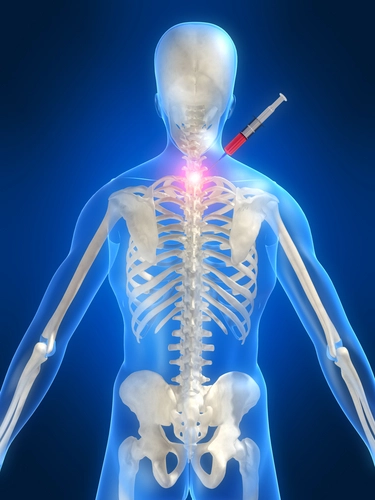Orthopedic Coding Alert
Bust 5 Common Myths to Manage Your Modifier 24 Claims
Focus on the surgeon’s documentation, not the appointment book.
If you want to ensure you get paid for services your orthopedic surgeon performs after a major procedure while you’re still billing in the global period of the procedure, you need to know the ins and outs of modifier 24 (Unrelated evaluation and management service by the same physician or other qualified health care professional during a postoperative period). Even seasoned billers struggle with this modifier at times.
Overcome modifier 24 claim challenges by busting five myths that will lead to denial after denial if you fall into their billing trap. In part one of this two-part series, we’ll bust the first two myths about when you should use modifier 24.
Myth #1: Modifier 24 Applies To Any Service Done In the Post-Op Period
You should only append modifier 24 to an appropriate E/M code when an E/M service occurs during a postoperative global period for reasons unrelated to the original procedure. Modifier 24 tells the payer that the surgeon is seeing the patient for a problem unrelated to surgery. Therefore, the plan should not include the E/M service in the previous procedure’s global surgical package.
Modifier 24 is only for use on E/M codes, and only for use during the post-operative period (10 days or 90 days).
The very definition of the modifier states it plainly: “unrelated evaluation and management service.”
Rule: You cannot bill separately for E/M-related services relating to the original surgery during the global period. The global surgical package includes routine postoperative care during the global period.
Additionally: Modifier 24 only applies to services your physician performs after the surgical procedure. If your physician performs an E/M service “before a procedure, on the day of that procedure, you would need a 25 (Significant, separately identifiable evaluation and management service by the same physician or other qualified health care professional on the same day of the procedure or other service) modifier (for minor procedures) or the 58 (Staged or related procedure or service by the same physician during the postoperative period:...) modifier (for major procedures), experts say. The 57 (Decision for surgery) modifier also applies to E/M codes done the day before the major procedure. This is true provided that the E/M code is significant and separately identifiable.
Myth #2: Scheduled Office Visit Rules Out Modifier 24
Just because a patient was scheduled to come into your office for a follow-up visit related to the surgery, you shouldn’t automatically assume you’re unable to bill separate services using modifier 24.
Example: The surgeon removes a lump near the knee and later confirms the outgrowth to be a sarcoma of the bone. When the patient comes back in to the office for review, the surgeon does an extensive E/M service/office visit with the patient to discuss.
In this case, you “should be able to use modifier 24 to describe an E/M service unrelated to the surgery (only related to the disease process),” says Marcella Bucknam, CPC, CPC-I, CCS-P, CPC-H, CCS, CPC-P, COBGC, CCC, internal audit manager with PeaceHealth in Vancouver, Wash. “CPT® would always allow this but even Medicare states that care directed at the underlying disease process is separately billable in the global period.
Key: Even though the visit initiated (was scheduled) as follow-up for surgery (i.e., for the sutures) you shouldn’t think modifier 24 is out of the question. “People put too much emphasis on how a visit was scheduled,” Bucknam says. “No one typically sees your clinic schedule. It’s the documentation that counts. Additionally, no one would think that they shouldn’t bill separately if the patient came in for follow up and also had a broken finger! It’s the same thing, just more subtle.”
Myth #3: You Can Never Use Modifier 24 For Complication-Related Services
When you report postoperative services to payers that follow CPT® guidelines, you’ll need to append modifier 24 to the E/M code to indicate that the service took place during the surgery’s global period.
Example: If a patient has abdominal surgery and returns to your office with a postoperative wound infection along the suture line, you may be able to collect from private payers for an established patient visit and for the physician’s treatment of the infection.
If the physician treats the infection in his office, you may be able to file a claim using modifier 24 to those payers following CPT® guidelines.
Pointer: Complications of surgery can be separate and billable in some cases, unless the payer is following Medicare rules. Medicare does not allow post-operative complications (hematoma, seroma, infection, etc) to be reimbursed unless there is a need to return to the operating room. At that point, a different modifier comes into play, experts say.
CMS and CPT® agree: If the physician must return to the OR to treat a postop complication, both Medicare and private payers will pay at a reduced rate when you append the appropriate modifier to the surgical CPT® code describing the surgeon’s treatment of the postsurgical complication. If the surgeon returns to the operating room to surgically correct a post-operative complication during the global period of a previous surgery, the correct modifier is 78 (Unplanned return to the operating/procedure room by the same physician or other qualified health care professional following initial procedure for a related procedure during the postoperative period).
Bottom line: Determining whether complications of the surgery/procedure count as unrelated, and therefore mean you’ll use 24, means you must know what the guidelines are for the insurance company being billed. Medicare considers all complications part of global unless the patient is taken back to the OR. Most commercial insurances however will allow complications to be billed during global with the modifier 24.
Myth #4: There Must Be a New Diagnosis If You Use Modifier 24
While a different ICD-10 diagnostic code might indicate that the E/M service performed in a global period was unrelated to the surgery, you do not have to have different diagnoses to append modifier 24 and to receive payment for those services.
“It is not necessary that the two services have a different diagnosis but it should be clear that the service is performed to discuss results, prognosis and treatment options and that any work done related to the surgery (change bandages, check wound, etc.) is not used to support the level of service billed,” Bucknam says.
Caveat: You won’t find that it is mandatory to have a different diagnosis, experts say. However, that said, for some insurance companies it is easier to get them to pay for the E/M completed during post op if the diagnosis is different.
Pitfall: Do not code the E/M if the documentation falls short. This would be considered fraud and certainly not an area where any coder should go. The proper use of modifier 24 can legally increase revenue and should be applied if applicable.
Myth #5: You Should Never Use Modifiers 24 and 25 Together
You may find yourself in situations where you need to combine the forces of modifiers 24 and 25 (Significant, separately identifiable evaluation and management service by the same physician or other qualified health care professional on the same day of the procedure or other service) to avoid a denial of a claim.
You can use 24 and 25 on the same claim, if you are seeing a patient for a completely new issue within the post op period, a procedure was done that same day, and the E/M code is significant and separately identifiable from the procedure.
Example: A patient undergoes major surgery. During the postoperative period, the patient comes for an office visit that is absolutely unrelated to the first surgery. At the unrelated E/M visit, the physician also performs a minor surgical procedure (such as a biopsy or cystoscopic examination) unrelated to the initial surgical procedure. In this case, you will append both modifiers 24 and 25 to the E/M code — modifier 24 to allow payment of the E/M service in the global period of the initial surgery and modifier 25 to allow payment of the E/M service along with another procedure performed on the same day.
Bill Mallon, MD, former medical director, Triangle Orthopedic Associates, Durham, N.C., shares an interesting example from his surgical practice. “Our patient was in the global surgery but was diagnosed with an unrelated carpal tunnel syndrome (CTS). He was treated with an injection for the CTS (procedure) and that gets a modifier 24 because it is in the global period, and a modifier 25 because it becomes a procedure on the same day as an office visit.”
Tip: Always use the postoperative modifier (24) first, before you use other modifiers. Most computers sequence their edits, putting the postoperative period edits as the primary edit.
Related Articles
Orthopedic Coding Alert
- News You Can Use:
Rejoice for This Shoulder Arthroscopy Edit Reversal
Preview this 29823 edit reversal. You’ve got big news for shoulder arthroscopy coding. If you [...] - ICD-10:
Get Ready for Thousands of Ortho Changes Planned for ICD-10-CM 2017
You’ll find brand new codes, such as these for Salter-Harris fractures. The CDC has posted [...] - Modifiers:
Bust 5 Common Myths to Manage Your Modifier 24 Claims
Focus on the surgeon’s documentation, not the appointment book. If you want to ensure you [...] - Reader Question:
Here are Physician Signature Requirements
Question: What are the necessary requirements for physician signatures? Are E-signatures equally acceptable as handwritten signatures? [...] - Reader Question:
Multiple Injections? Don't Expect More Payment
Question: If the surgeon gives 2 injections into the (same) knee in two separate locations, one [...] - Reader Question:
Every Laminotomy Adds Up
Question: How do we report if the surgeon takes a paramedian approach and does osteotomies to [...] - Reader Question:
Hesitate Before Billing E/M with Every Surgery
Question: Can I charge for a 99213 and a 17250 on the same day at the [...] - Reader Question:
Dig for Info to Code Acute or Chronic Pain
Question: For diagnosis coding purposes, what is the difference between acute and chronic pain? Notes indicate [...] - You Be the Coder:
Highlight These Terms to Determine Graft Differences
Question: What’s the difference between a spinal allograft and an autograft? Texas Subscriber Answer: If the surgeon [...]




